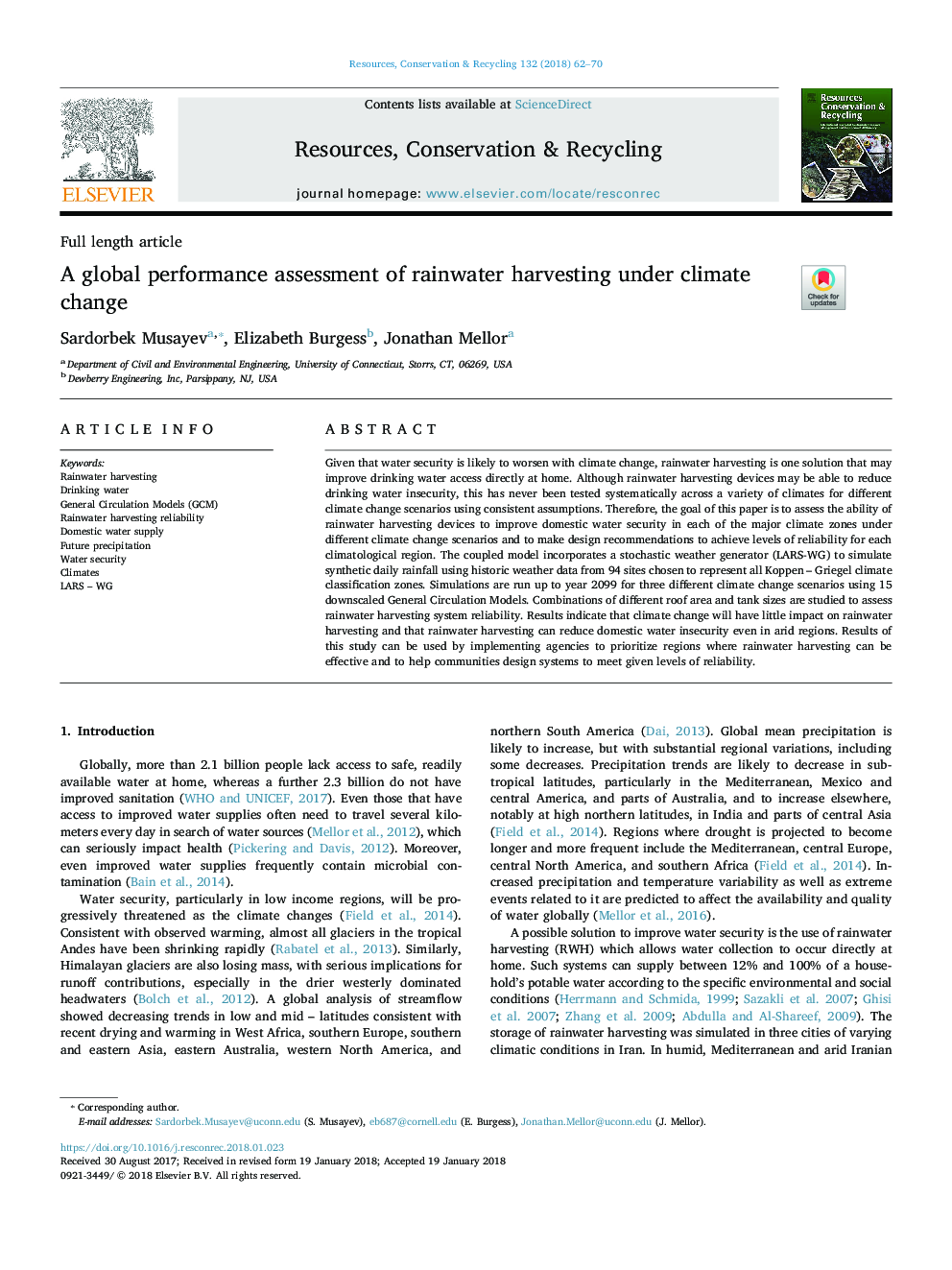| Article ID | Journal | Published Year | Pages | File Type |
|---|---|---|---|---|
| 7494280 | Resources, Conservation and Recycling | 2018 | 9 Pages |
Abstract
Given that water security is likely to worsen with climate change, rainwater harvesting is one solution that may improve drinking water access directly at home. Although rainwater harvesting devices may be able to reduce drinking water insecurity, this has never been tested systematically across a variety of climates for different climate change scenarios using consistent assumptions. Therefore, the goal of this paper is to assess the ability of rainwater harvesting devices to improve domestic water security in each of the major climate zones under different climate change scenarios and to make design recommendations to achieve levels of reliability for each climatological region. The coupled model incorporates a stochastic weather generator (LARS-WG) to simulate synthetic daily rainfall using historic weather data from 94 sites chosen to represent all Koppen - Griegel climate classification zones. Simulations are run up to year 2099 for three different climate change scenarios using 15 downscaled General Circulation Models. Combinations of different roof area and tank sizes are studied to assess rainwater harvesting system reliability. Results indicate that climate change will have little impact on rainwater harvesting and that rainwater harvesting can reduce domestic water insecurity even in arid regions. Results of this study can be used by implementing agencies to prioritize regions where rainwater harvesting can be effective and to help communities design systems to meet given levels of reliability.
Related Topics
Physical Sciences and Engineering
Energy
Renewable Energy, Sustainability and the Environment
Authors
Sardorbek Musayev, Elizabeth Burgess, Jonathan Mellor,
